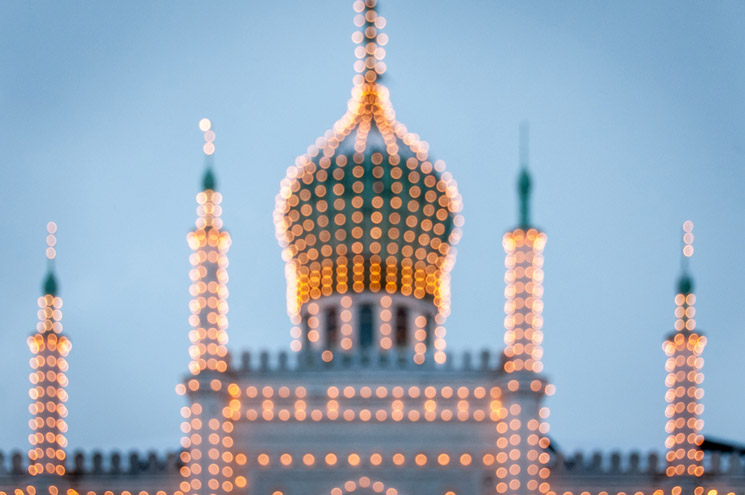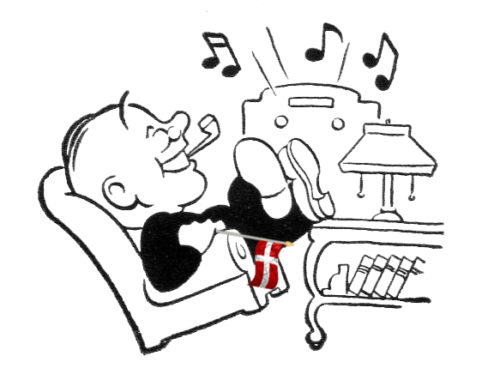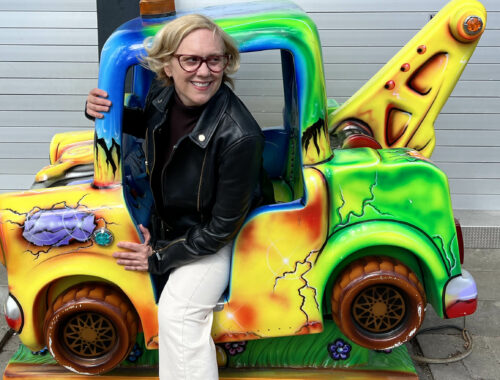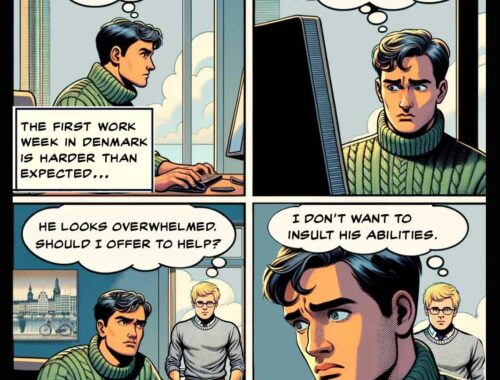There’s a new mosque opening down the street from me this spring, a big one. It will be the first mosque with minarets in Denmark, although the minarets are legally prohibited from calling to prayer.
The people behind the mosque are doing everything they can to blend in with the local neighborhood – they even went to observe at a local church service a couple of Sundays ago. Given the Danes’ lack of interest in religion, they were probably the only ones there.
There are a lot of Muslims in Denmark, about 250,000 out of a population of five-and-a-half million, most of who have arrived here in the past 40 years.
And contrary to what the Danish right-wing parties might say, they’ve brought a lot of good things to Denmark, and not just Shwarma shops.
Milk on a Sunday
Just the fact that kiosks exist was a Muslim innovation in Denmark. When I first visited Denmark in 1984, all the shops closed at 5:30pm on weekdays and 2pm on Saturdays, and they were closed all day Sunday. If you ran out of milk on a Sunday, you had to borrow from a neighbor or just drink beer until Monday morning. The kiosks run by Muslim immigrants changed all that.
These days, Muslim women in particular have a lot to offer to Danish culture. If you go into any pharmacy in Denmark, you will probably find at least one female pharmacist wearing a headscarf.
I had a similar experience when I did a tour of the Rigshospitalitet, Denmark’s largest and most prestigious hospital, where all the royal babies are born. In the bloodwork division, almost all the workers were Muslim women wearing headscarves.
This is a way for devout Muslim women to join the medical field without having to touch men or see men unclothed. I thought that was great.
As a matter of fact, the statistics show that girls from second generation and third generation immigrant backgrounds in Denmark now attain higher educational credentials than ethnic Danes. Now, all those girls are not Muslims, but a lot of them are.
Hijab on a bicycle
Sure, there are still problems and tensions mixing Danish cultures with Muslim traditional cultures. Sometimes criminals who say they are enforcing sharia harass bar owners, but they’re perfectly happy to forget all about it if the bar owners pay them off. And there have recently been problems with Muslim-Danish gang members shooting each other in the streets of Copenhagen, a development that upsets ordinary Muslims as much as it does everyone else.
Women wearing hijab also face some challenges in Denmark. First of all, depending on the clothes they choose, it can be difficult to ride a bicycle. Some Muslim women feel modest enough in long loose pants, and that works fine, but others feel a long skirt is required, and that works less well. Riding a bicycle is the key to freedom in Denmark – it means you can get around cheaply and safely just about anywhere. If you don’t, you’re stuck waiting for the bus. Whenever I’m stuck waiting for the bus, I see a lot of women in long, dark skirts waiting with me.
At How To Live in Denmark.com, I get a fair amount of email from Muslims who have written to me, asking if Denmark is a good place for them to live.
It is a good place. All the things that are good about Denmark for other people – that it’s a peaceful country, a safe country, a country where you can earn a good living and still have time for your family – are also good for Muslims.
Danes must adapt, but Muslims must adapt too
I also tell the people who write to me that, in a multicultural world, it’s fair enough to ask the Danes to adapt to and accept different ways of living, but you have to adapt and accept, too.
People dress differently in Denmark. The women wear less clothing, particularly in summer, and that does not indicate that they’re available to any man who asks. That’s just what they’re comfortable in, just like women you know may be more comfortable with hijab or other traditional dress. You must accept this.
I also tell the people who write to me that if you live in Denmark, you have to be able to accept gay people. Gay people here get married, they have children, and those children are going to play with your children. They’re going to invite your children – and maybe you – to their homes. If that’s not something you can handle, your children are going to be lonely. They’re not going to fit in. And they’re less likely to be successful in school.
The roles of men and women are different than they are in Muslim countries. Most married women work outside the home in Denmark. The tax system is set up so it’s very difficult for one income to support a family. And very few people have servants in Denmark. That means that even educated, well-off people do most of their own housework. Men, too. Educated, wealthy men do cleaning and cooking and daily care of children. This is very unusual in most of Asia, the Middle East and Africa. In Denmark it’s expected.
I read in the newspaper about a small Danish company that hired an Iranian engineer. At this particular company, everyone would eat breakfast together on Friday morning. After the breakfast was finished, they would take turns cleaning up. Everyone took a turn, including the CEO. When it was the turn of the Iranian engineer to clean up, he quit. I’m an engineer, he said. I’m not a cleaning lady.
In Denmark, that’s not true. In Denmark, everybody’s a cleaning lady.
Buy Kay’s books about Denmark on Amazon, Saxo, Google Books, Apple Books, Barnes & Noble Nook, or via our webshop.
Image mashup copyright Kay Xander Mellish 2025
Read also:
Raising Kids in Denmark: Social engineering begins in day care





